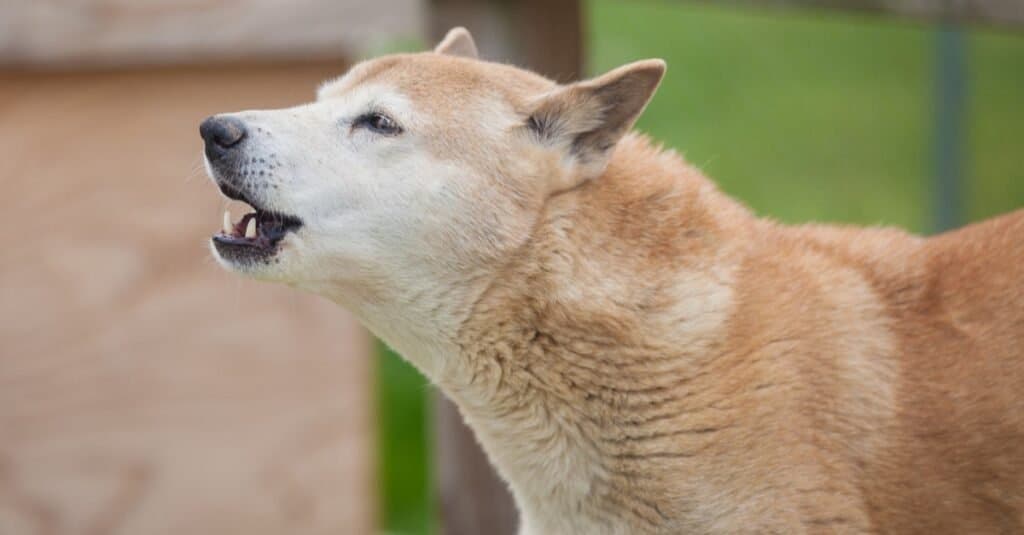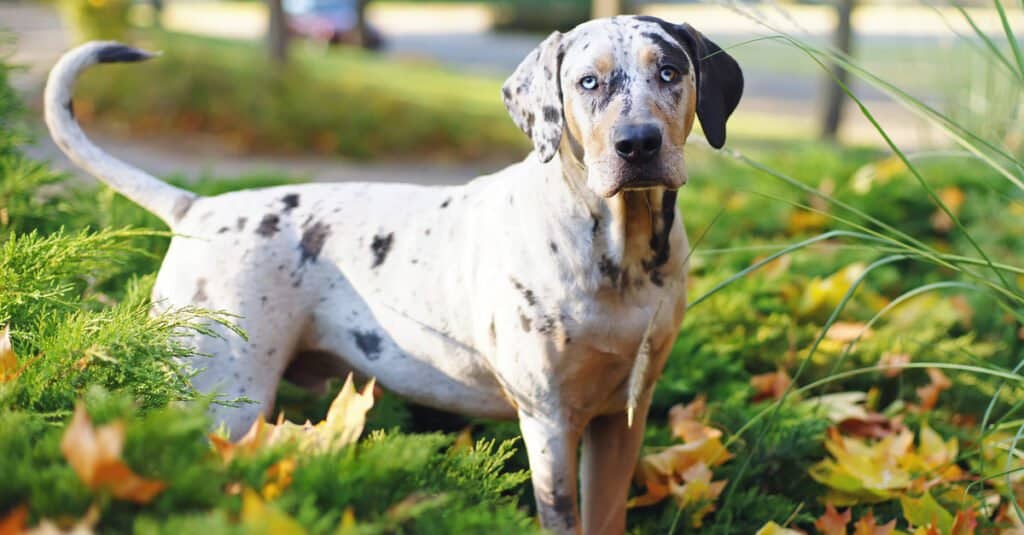Dogs are descendants of wolves–muscular, athletic hunters. Their ancestors traveled long distances and hunted large prey. Not to mention, the dog breeds of today seem to be bred for just about everything. But, can they climb trees?
Many dog breeds can climb up trees with the right motivation but will struggle to climb back down. A few domesticated dog breeds were bred with unique features such as long dewclaws and flexible bodies, allowing them to climb trees more easily. This is also true of a few wild canines.
While it’s not something we see every day, dogs can climb trees–but yours likely (and hopefully!) won’t ever do so.
In this article, we’ll discuss which dogs can climb trees, domestic and wild. We’ll also talk about what makes a dog able to climb trees and why most breeds struggle.
Dogs Don’t Usually Climb Trees

The New Guinea singing dog has flexible joints that help it when climbing trees.
©Tara Lynn and Co/Shutterstock.com
You won’t usually see a dog up a tree. The dogs who do frequently climb trees typically have adapted to have different features than most breeds.
For instance, the New Guinea Singing Dog has flexible joints. Catahoula Leopard Dogs have paws designed for climbing trees, with webbing between the toes and elongated dew claws.
That said, some breeds not known for climbing might make exceptions if properly motivated.
How Do I Know if My Dog Can Climb a Tree?
If you don’t have a breed that climbs commonly, you’ll likely never see your dog make it very far off the ground. They might jump at the bottom of a tree after a squirrel, or even leap into the air to try to catch a branch to play with.
There are some features that make tree climbing easier. Dogs with lithe bodies can climb trees easier than those with stocky builds. Long claws help them to grip the tree.
Dogs who are flexible will have an easier time climbing–think of cats and their twisty bodies. Muscle also helps dogs to pull themselves up, with muscular front legs being especially helpful.
Smaller dogs climb better as well since large dogs have more weight to lift and thus have to work a lot harder to pull themselves up.
When in doubt, don’t wait to see if your dog will climb, as this might end in them falling and hurting themselves. There’s always the possibility that your dog can climb up, but won’t be able to climb back down safely.
Dogs don’t land on their feet like cats, so they’re more at risk of serious injuries from a fall. Especially if they’re tiny!
Hunting Dogs are Most Likely to Climb
As we discussed above, tree climbing dogs tend to have unique features. This is due to the way they were bred, usually for hunting purposes.
Dogs, especially domestic breeds, don’t have much reason to climb trees to escape predators. But finding prey is a different story.
Dogs not bred to climb are also more likely to try if they have a strong prey drive. If your dog frequently chases squirrels or other animals up trees and seems very determined to get to them, keeping them on a leash might be a good idea to prevent tree climbing.
Dog Breeds that Climb Trees

Catahoula
leopard
dogs are one of the dog breeds known to climb trees.
©Eudyptula/Shutterstock.com
The following dog breeds are known for their tree climbing abilities:
- Catahoula Leopard Dog
- Tree Walking Coonhound
- New Guinea Singing Dog
- Parson Russell Terrier (also known as the Jack Russell Terrier)
- Belgian Malinois
- Phu Quoc Ridgeback
- Chihuahua
Chihuahuas may seem out of place on this list, but they actually used to be known as great climbers! Modern-day Chis may struggle with this activity, though.
Wild Canines that Climb Trees
Three wild canines that climb trees are the gray fox, the dhole, and the raccoon dog.
Gray foxes are skilled climbers who even live in trees! This protects them from their own predators as well as aids them in hunting rodents.
Dholes are orange canines with fox-like features native to central and south Asia. Dholes are great at jumping and climbing. They may climb trees to eat fruit, insects, rodents, or even monkeys!
Raccoon dogs, also known as tanuki, look quite raccoon-like but are canines. They’re short with long backs and puffy coats and raccoon-like facial markings. Raccoon dogs hunt a variety of prey, including birds, rodents, and reptiles that may live or scamper high up in the trees.
Conclusion
Most canines are perfectly happy to keep their four paws on the ground. They’ve been bred, either by humans or through natural selection, to creep, hide, and take on prey at the ground level instead of venturing into the treetops.
Most dogs have great levels of strength and endurance, but not the flexibility or the claws to climb up, or especially back down.
That said, I hope you’ve enjoyed learning about the unique canines that can venture up high.
The photo featured at the top of this post is © iStock.com/damedeeso
Ready to discover the top 10 cutest dog breeds in the entire world?
How about the fastest dogs, the largest dogs and those that are -- quite frankly -- just the kindest dogs on the planet? Each day, AZ Animals sends out lists just like this to our thousands of email subscribers. And the best part? It's FREE. Join today by entering your email below.
Thank you for reading! Have some feedback for us? Contact the AZ Animals editorial team.






